
By : RACHNA TYAGI
CHENNAI :
In an industry where “nose-jobs” and “facelifts” are a big deal, you can only imagine the frenzy and the cacophony that accompanies the launch of a brand-new product. And if it happens to be by a homegrown auto manufacturer such as Mahindra & Mahindra, then you can be doubly sure that it is nothing short of a mega celebration. And that is precisely what we have been witnessing when it comes to their latest SUV, the Mahindra XUV700. Afterall, it isn’t every day that an SUV receives such a tremendous response and that too within minutes of its bookings commencing. (25,000 bookings within 57 minutes and 50,000 bookings in 180 minutes, to be precise). Some feat that! But the raging question is how has Mahindra XUV700 managed such a staggering number of bookings and what is it about this SUV that makes it so desirable to so many across the country? Surely, there is more to it than just the new direction that the company is taking vis-à-vis its approach to building SUVs, not to mention, a completely fresh brand-identity. We caught up with Ramkripa Ananthan, Chief of Design, M&M Ltd, Velusamy R, Chief of Global Product Development, M&M Ltd, and Rajiv Mehta, Head of Product Planning, M&M Ltd, to understand what makes XUV700 so coveted and they had some fascinating as well as insightful things to say about the XUV700. Read on…
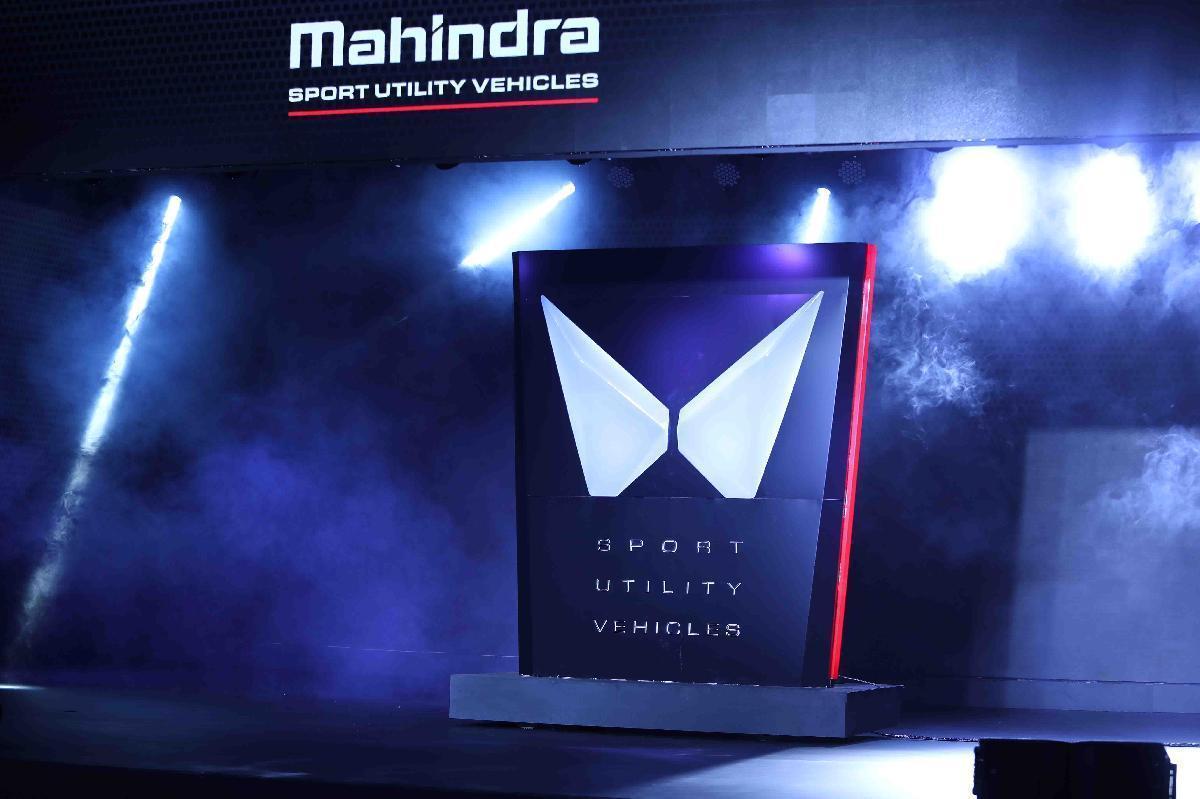
While it is well-known that M&M’s XUV500 had been a runaway success, it was clear that the new XUV700 would have to take the legacy forward, but what many may not know is that the XUV700 has done this by not borrowing anything from the XUV500! “We were very clear that we won’t be doing what we were trying to do four-five years back or what the competition is doing. The XUV700 hasn’t been made keeping product A or B or C in mind. We are going after the five pillars that brand Mahindra stands for, [and] all our products in the future, will reflect these five pillars very strongly which means that all our SUVs will boast Spirited Performance, have Sci-Fi, offer First-in-Class features, be big on Safety, and will be Tough, yet Sophisticated,” says Rajiv Mehta, Head, Product Planning, Mahindra & Mahindra Ltd. “With Indians having gone through a whole learning cycle, every time we do a new product it is more and more reflective of what the consumer wants,” he says. “We have many customers who feel very proud of saying “Saddi Gadi hai,” (It’s India’s car). It is a very proud moment for us,” says Mehta.
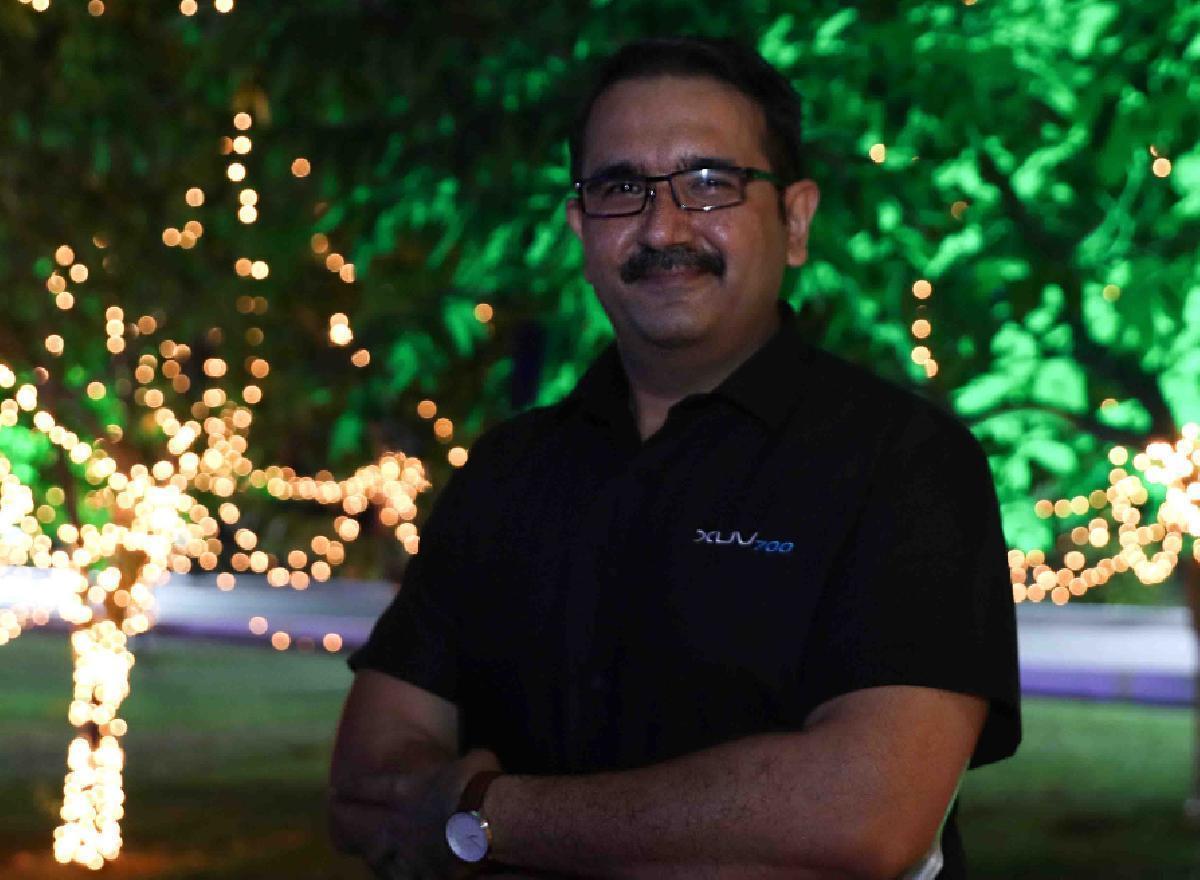
But for Indians to say that proudly, car manufacturers have to ensure that their offerings appeal to their target audience and undoubtedly, aesthetics plays a big role in people liking or disliking a vehicle at first glance. A large part of how an OEM’s latest offering looks has to do with how it has been designed and that can more often than not be tricky business, because designing always happens keeping future trends in mind. “In the auto industry we have a rhythm at which we create products, we have a large lifecycle planning, a portfolio planning and in this case, it was time to create the next SUV. Also, with the gap between sedans and SUVs narrowing and with uncomfortable, and unsophisticated SUVs being a thing of the past, SUVs with a certain silhouette and form, that give the feeling of travelling in something as good as a car, we held on to our core values of being an SUV and without being rough or uncomfortable, set out to build the XUV700,” says Ramkripa Ananthan, Chief of Design, M&M Ltd.
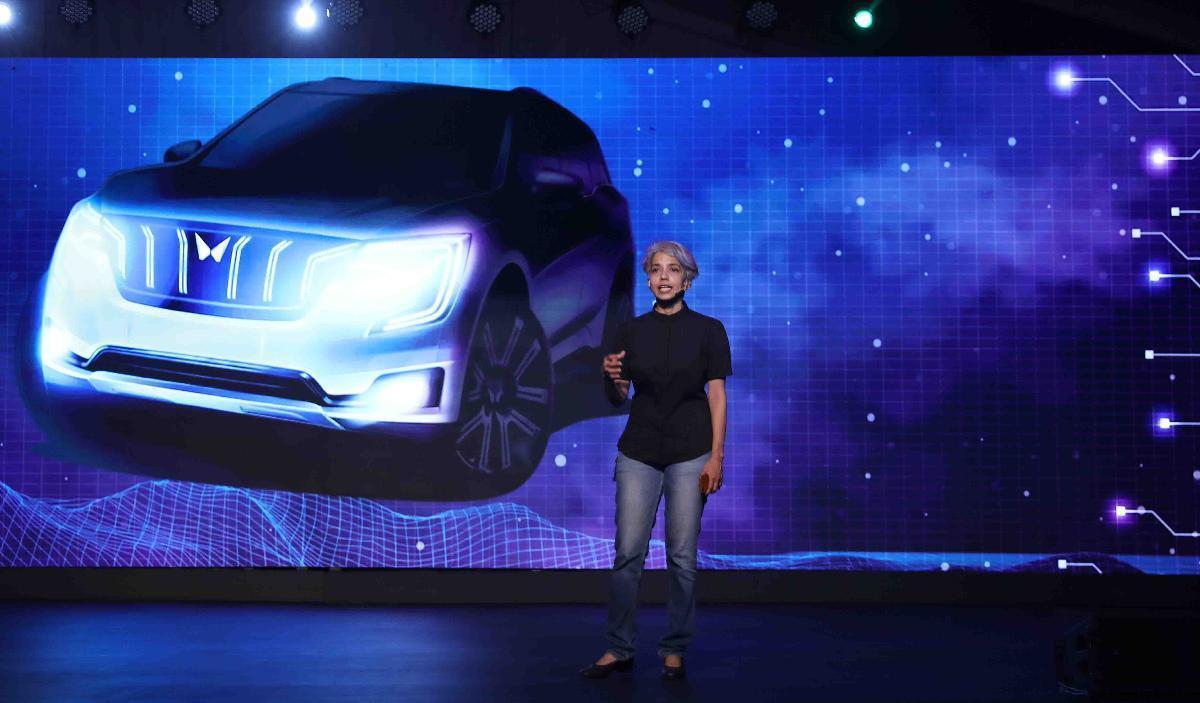
However, like they say – easier said than done. “Design is 1% inspiration and 99% perspiration,” says Ananthan, apologizing for the cliché. “There is a moment when you say wow, I have to capture that, and then you work on it until you get it right, without making it look overworked. At the end of it, it still must look like it just came about naturally,” she says. Working on the XUV700 “was a little difficult, because there is a legacy that you can’t ignore,” says Ananthan. “Yes, it has to be an XUV, yes, it has to be a Mahindra, but it has to be sophisticated. It is a family… you’re calling it an XUV, and it has to have some character – not just [in] the way it looks, but [in] the way it drives, [in] the way it feels, all of that has to have a certain XUV-ness. You’re trying to make something that looks like something from the past yet it has to be fresh. How do you get this balance, and our brand purpose is ‘Unmissable Presence,’ so again, how do you get this balance of ‘Unmissable Presence’ in something that has to create a wow when you look at it and not say “Yikes,” asks Ananthan who along with her team was tasked with the job of designing a new SUV for the Indian customer who is always desirous of “something novel [and] fresh.”
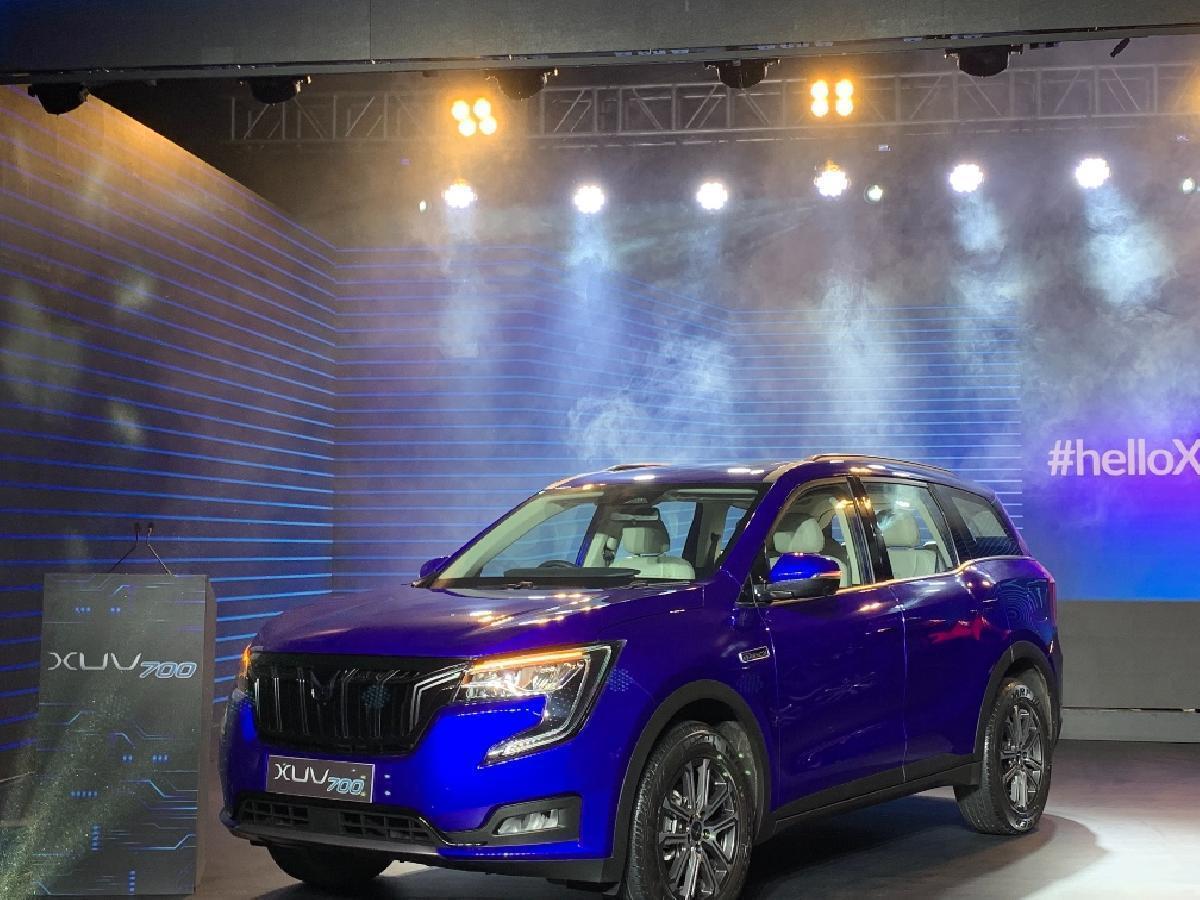
If design is such an important aspect of automobiles, can engineering be far behind? Velusamy R, Chief of Global Product Development, says that he knew that in order to make the XUV700 a super hit, he and his team would have to ensure that the SUV was not just big on performance but that it was also kitted out with some of the latest features that were being offered by other car makers, elsewhere in the world. “There is no doubt that we needed to succeed. A product that is distinctly above the rest is not going to work, if your brand isn’t very strong. Your brand has to be absolutely strong; only then can you sell a new product. Right now, we are in a phase when our product has to support the brand, so, we put our product in a different orbit altogether, for the rest to see, and the result is this,” says Velusamy about the XUV700.
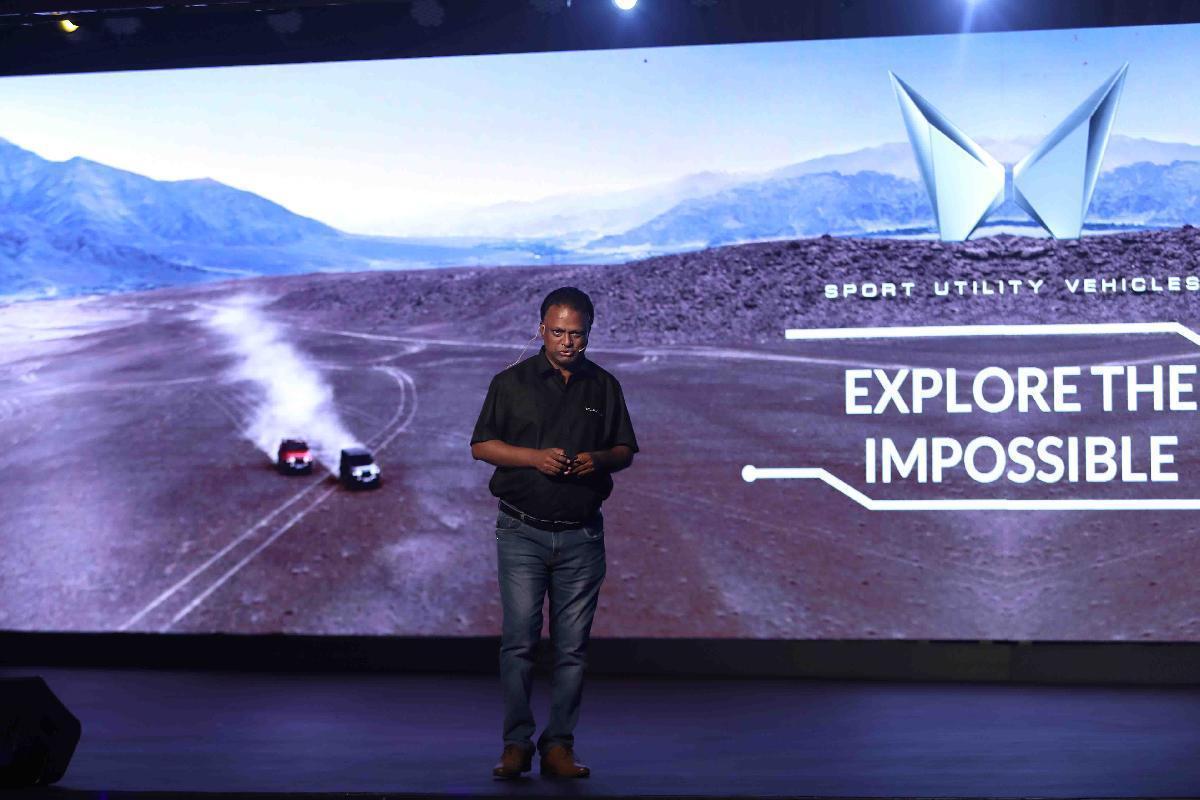
Going forward, with emission, fuel efficiency, and safety norms coming in, Velusamy says that they knew that they had to lead in every one of them. “We knew the speed at which the government is building roads, and so, we had to get the comfort, the driving dynamics, and the crash worthiness right… these were non-negotiable,” says Velusamy. “It was all about taking our product to the next level by offering something different. That’s the 200kmph dynamic performance feel that we offer,” says Velusamy who is all praises for the XUV700’s driving dynamics and refinement levels.
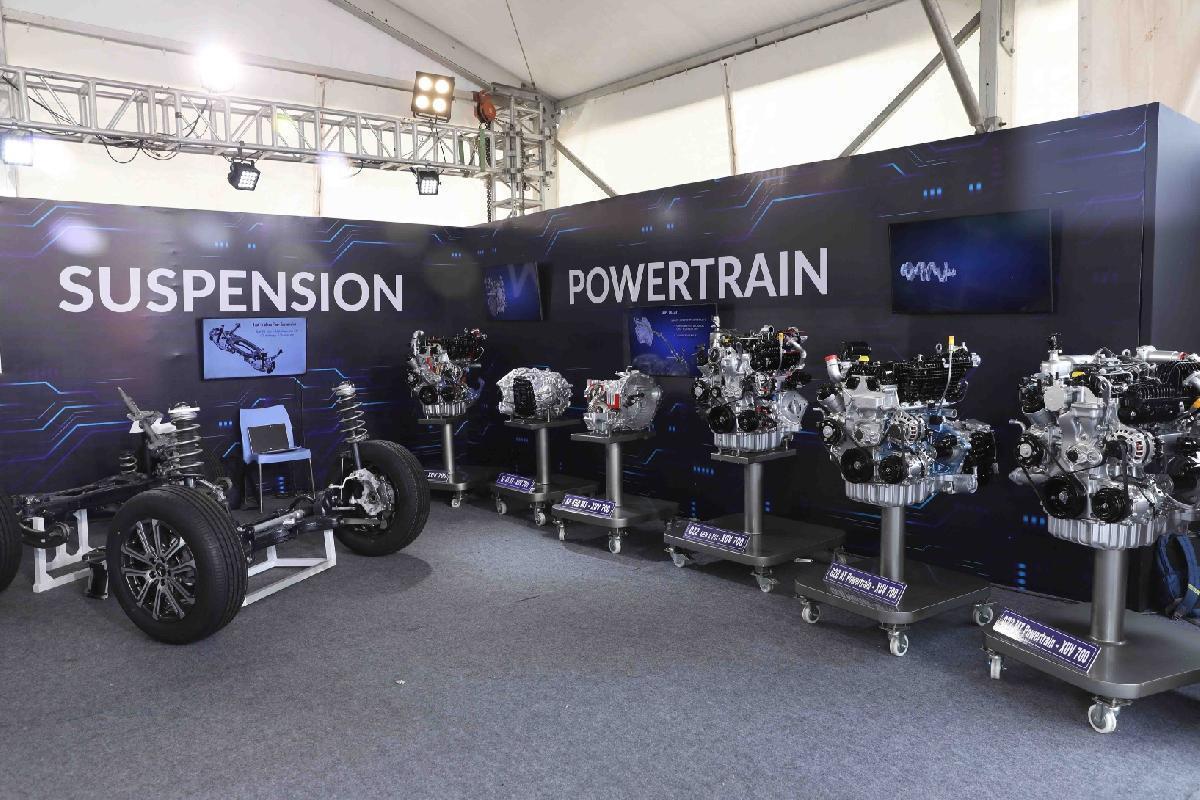
“There have been multiple stakeholders in developing this product,” Velusamy tells us. “While Bosch did the engine management system, the brake systems were tested in Australia and New Zealand, the Driver Drowsiness Detection system was calibrated in Europe and verified in India, ADAS was calibrated in Korea and verified in India, the Music system was calibrated in Japan and verified in India and the Infotainment system was developed in Detroit with Visteon along with multiple teams of Visteon in Pune, Chennai, and Bangalore with close to 130 guys working on it. The software used was all proprietary software form the suppliers and we ended up integrating multiple softwares, thereby defining exactly what we wanted. This is how the XUV700, came to be a truly global product,” explains Velusamy.
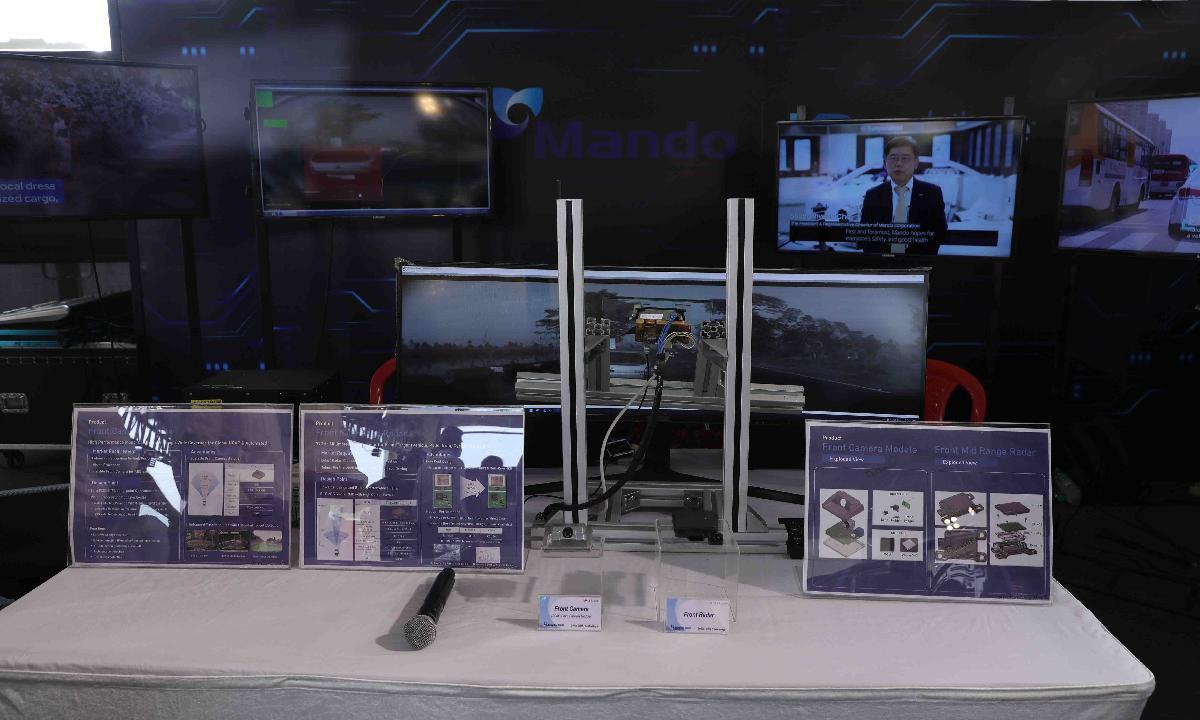
Mehta also calls the XUV700 “multi-dimensional” and “unlike some other typical SUVs which are very driver oriented.” He believes that “the XUV700, sort of broadens your canvas and attracts everybody, the husband and the wife, with its universal appeal.” Also, considering it is “digital” and “more engaging” it is the reason why they’re trying to give everyone a piece of it. “If you’re somebody who enjoys driving, you have fun with the car, while your co-passengers can have fun in the car. That is how we engage them as well,” explains Mehta.
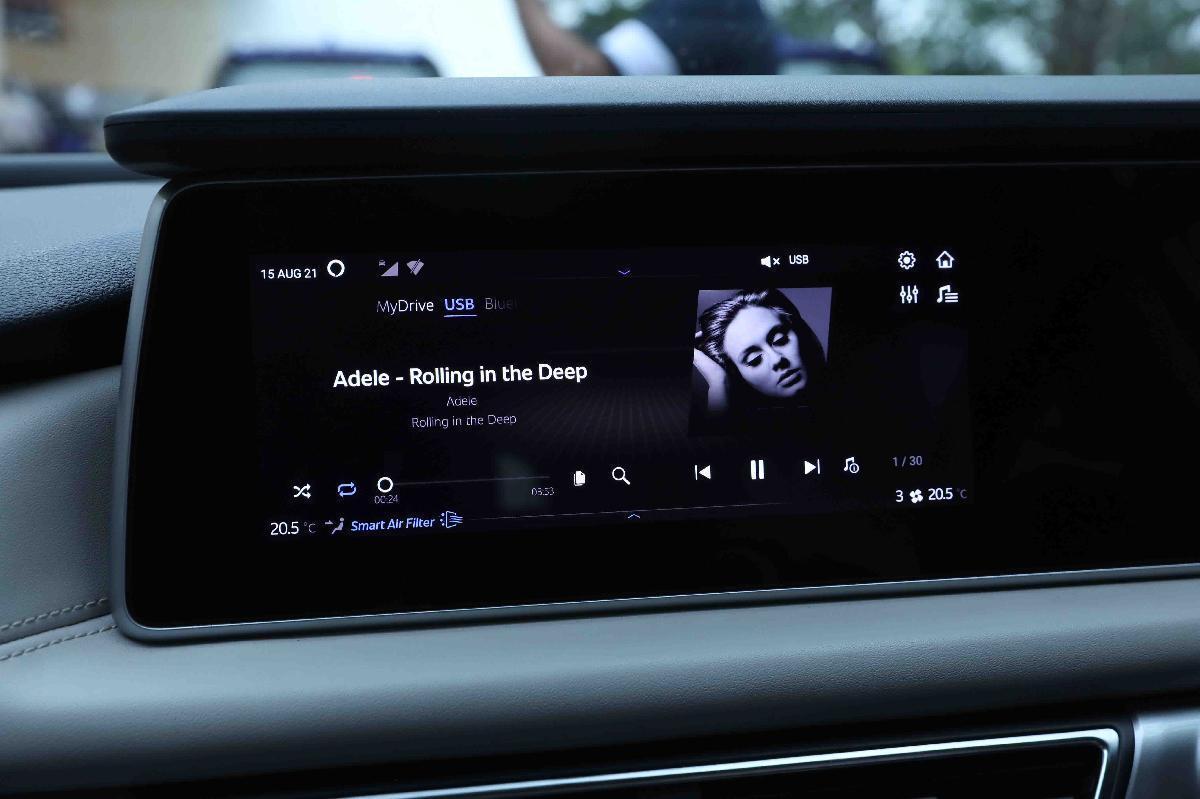
That a great deal of planning has gone into envisaging the XUV700 is evident. Everything we see today has taken years of planning and hard work. (Pure development time, we learn, has taken about 36-38 months, besides conceptualization and financials). “The most difficult part for a planner is how do I see the future three-four years down the line because that’s when the car arrives. So, in 2017-2018, to sit back and think what is relevant for 2022, was the most difficult part,” says Mehta. “What we typically do at Mahindra is look across categories for what will sort of set a trend and if any of the trend-setting products strengthen any of the five pillars, which I spoke of earlier, then it is a tick. Maybe, unaffordable at that point in time, but with technology becoming cheaper and if you have a time-value equation in your mind, it may possibly sound very expensive to the management today, but maybe in three years, things will fall into perspective. At times, some things don’t fall into perspective and that’s a tough call to make but the intent is to at least have a library of features available where you don’t put everything into a product. If its time has come you take it up and put it into a vehicle, if you think it is still expensive, you park it and you say I’ll take it up in the next cycle. That is the way we work. We’ve got enough technology on the XUV700. We started off three-four years back, very expensive… the infotainment system was three times the cost of what we were doing at the time, but we went with it because it definitely strikes a chord when it comes to Sci-Fi today, so we took those bets and upped the ante,” says Mehta.
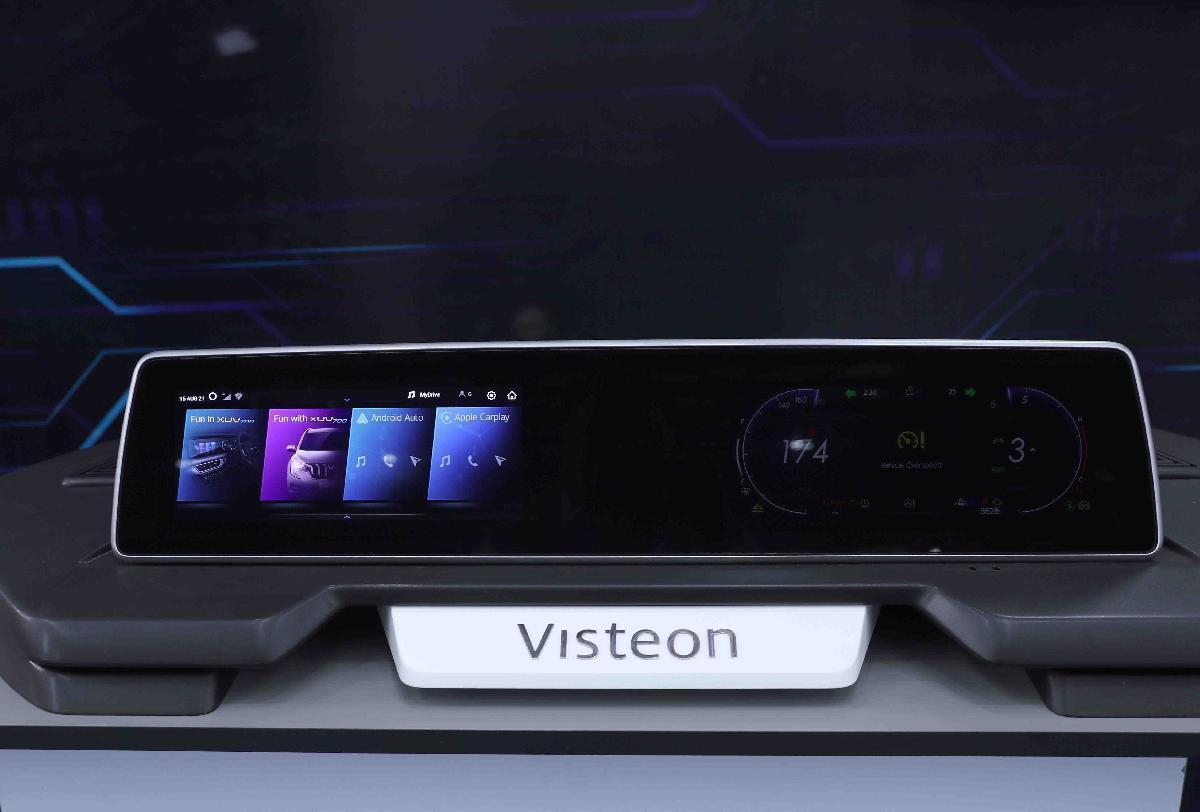
And those bets sure seem to have paid off. “Three and a half years ago we saw that trends were following multiple directions. [There was] cluster technology, infotainment technology, connected car technology and voice control technology…all of them were traversing a clear path and we knew clearly that this was the technology that we needed to bring in,” says Velusamy.
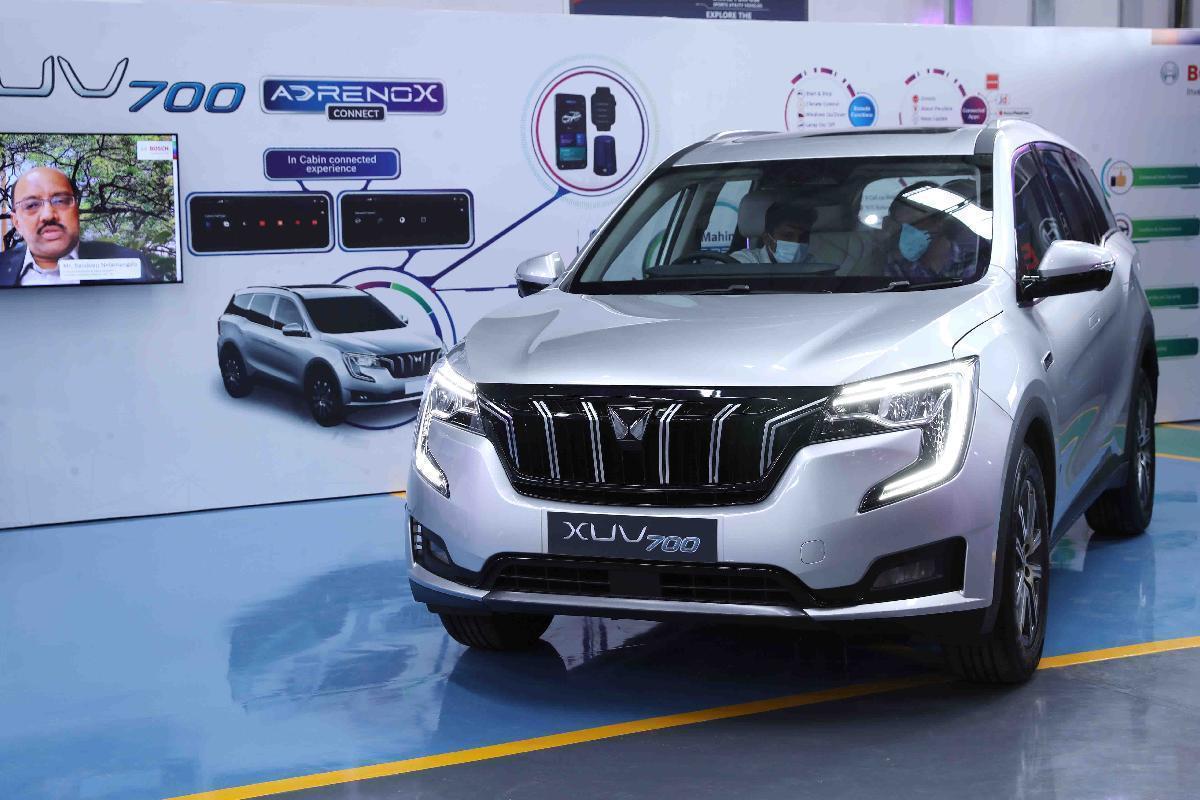
Talking about how the needs of customers have also seen a monumental change, he says, “Customers, today, don’t want to be distracted while driving, they want absolute refinement, and so, in the Mahindra XUV700, we offer 44.5 dB in the diesel model and 39dB in the gasoline model and this is when a typical car’s is about 47 dB – 63 dB. In this segment, we brought the lowest levels of NVH and that has a lot to do with the stiffness of the vehicle. We did several NVH simulations, crash simulations, stiffness simulations to arrive at the right BIW (Body In White) which is key for refinement of the vehicle. This was done all over the world with multiple consultants. The idea was to offer features of a luxury car at an affordable cost. That is how you bring the pleasantness of the moon to the earth,” says Velusamy. However, what Velusamy was trying to do but wasn’t easy because engineers needed to have that mindset. He gives us an example. “During the pandemic we said that we will get the VR technology, the bacteria killer, smart filter, the very latest technology, that has not yet been introduced by any OEM so far, and we got it! We did not settle for any ‘Me Too’ Technology. We only went after the best. We took one whole year to define what we needed and it was a year of extremely hard work,” says Velusamy.
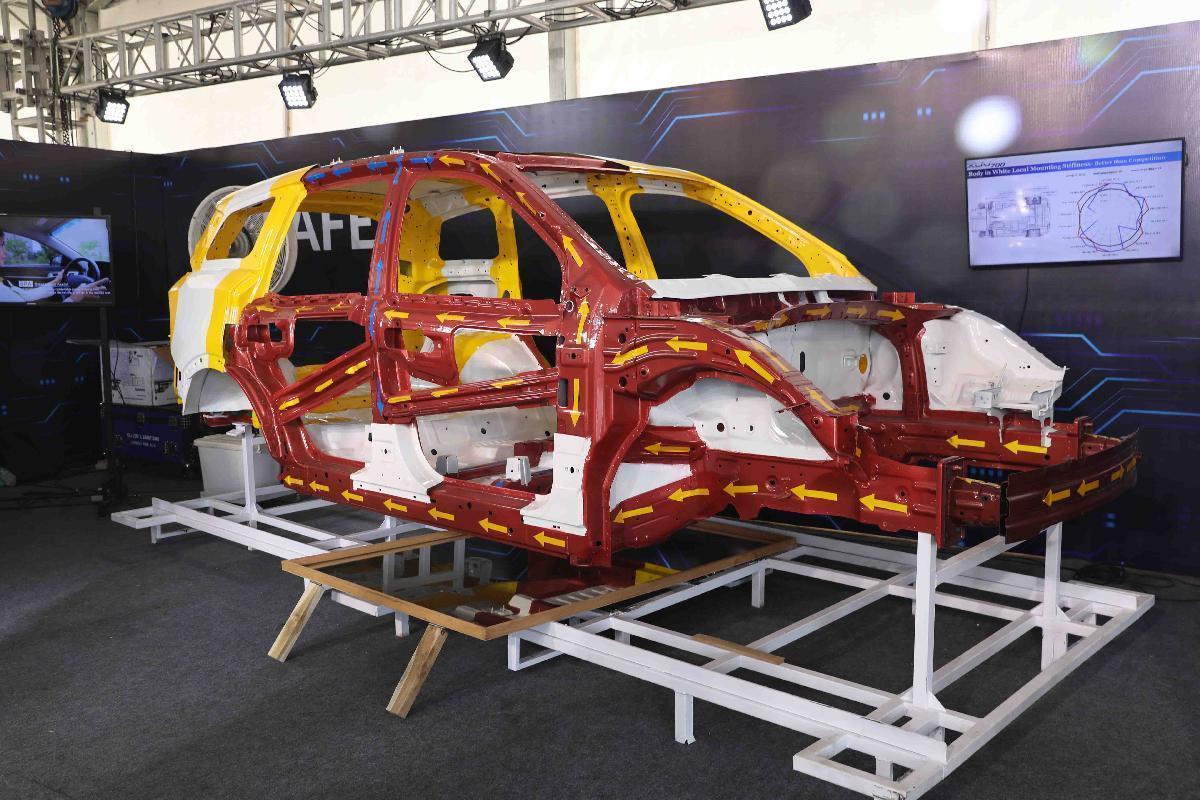
Building of the XUV700 wasn’t without learnings. Velusamy had some rather interesting things to say. “An execution team must not be a program management team where you just count your activities and put a set of people to execute it. An execution team should be a team that takes the physics in their hands and tries to solve every problem that comes their way. So, the execution team has to be an innovator using physics. The moment you define their role like this, they’re no longer program managers, chasing between different departments and that is the first thing that we did,” says Velusamy.
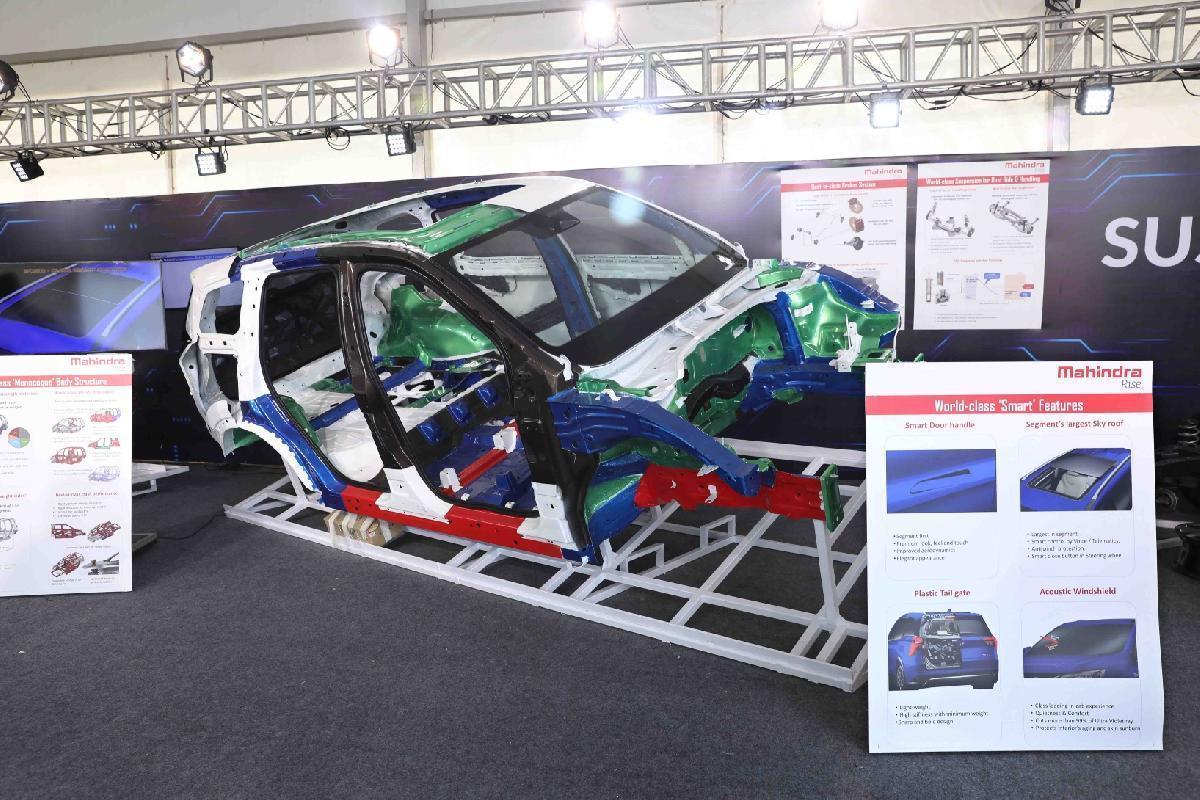
Ananthan who coloured her hair to match the colours of the AdrenoX for the XUV700’s launch event also spoke about the huge emphasis on technology while designing the XUV700. “We wanted to celebrate all that XUV700 has to offer. As soon as you get in the infotainment system comes on. The reason why I coloured my hair this way is because they’re AdrenoX’s Sci-Fi colours,” she says pointing to her hair. “Besides, the XUV700, has safety, ADAS, dynamic modes and the sound system is amazing! With the two 10.25-inch screens, LOCA, (Liquid Optically Clear Adhesive), we wanted to show the system is so much and the UI (User Interface) had to be such to celebrate it. Honestly, we spent more time and effort on the UI than on the design because it is so complicated and we had to get it right. Afterall, the Interface that you get on your mobile phone is what customers have come to expect on their cars as well and in the car neither can you compromise on quality nor can you offer something that is confusing. So, we worked with a lot of experts and got that right. Since that is so colourful and that really is the heart, we wanted the rest of the interiors to play a sort of support function and hold it all to celebrate,” says Ananthan.
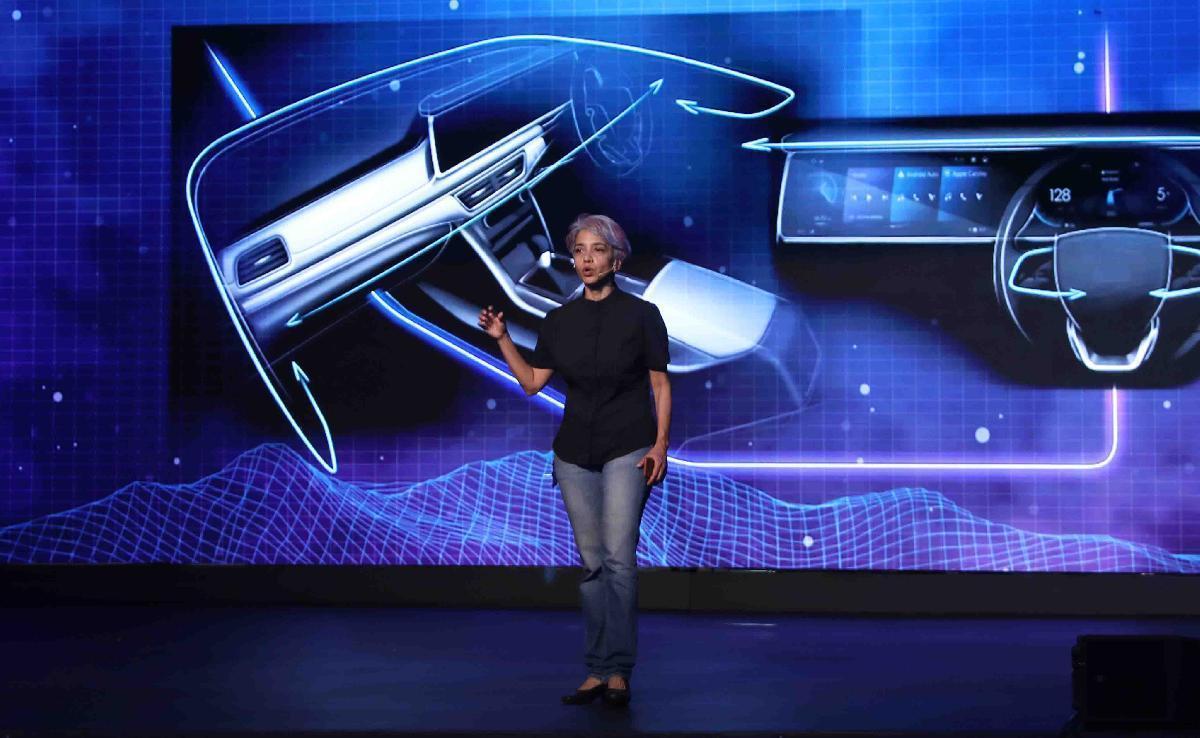
Explaining further, Ananthan, describes how the brief for the exteriors was ‘Unmissable Presence’ and for the interiors was a ‘handcrafted and sophisticated feel.’ “To celebrate the tech, we made mood boards, the words created the scene and from there we made material boards following which we went around looking for material that suited it. From that material we made full sized bucks and then from there we designed. Often, people come in and say, “I like black interiors,” but dude, it is not about what you like, there is a brief and we have to work around what fits the brief,” explains Ananthan. At Mahindra, it is very important to deliver ‘Command Seating’. We want our drivers and passengers to feel in command. It is also important that the driver and the passengers are easily able to read the hood. In our vehicles the beltline tends to be low, we keep it low because we want our drivers and our passengers to get very good visibility,” explains Ananthan. There is also the review committee at Mahindra which comes in and looks at the design at various stages of its development. “Besides this, there is also some customer research, not to mention some elite customers and some influencers who come in as we go closer to the market,” explains Ananthan.
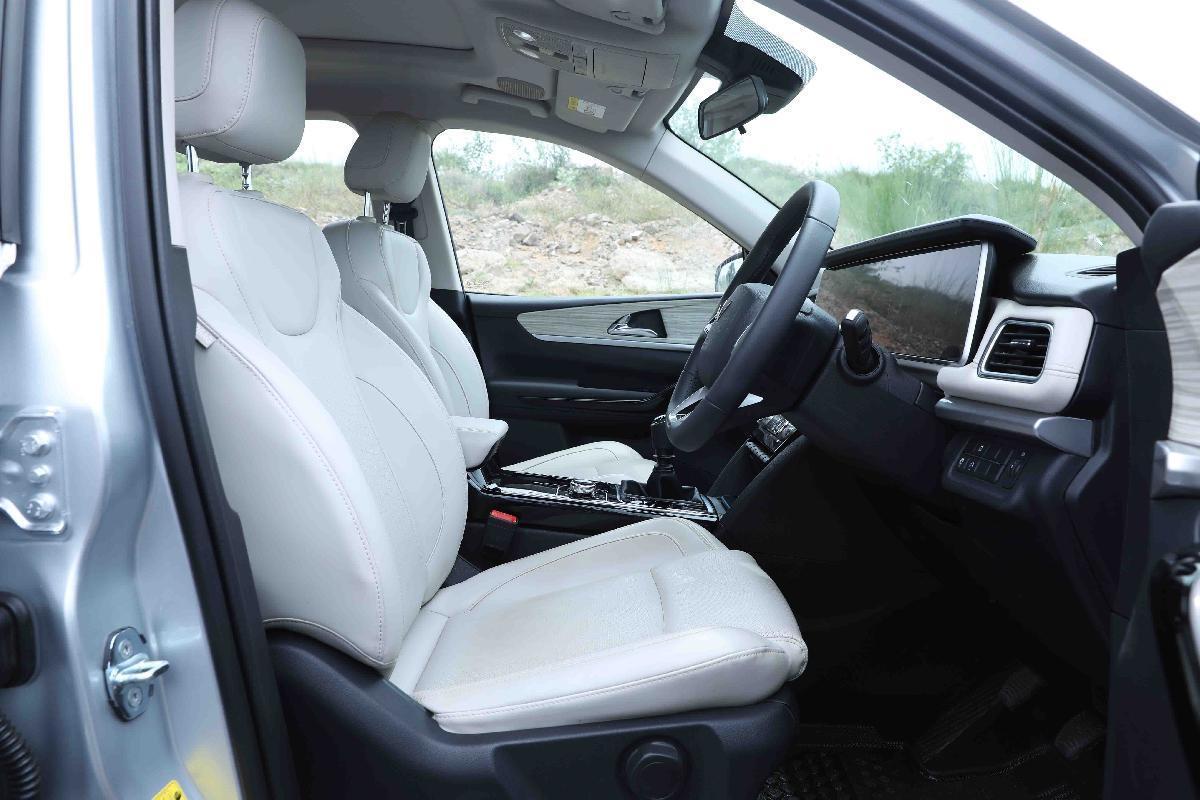
With XUV700 available in an array of dazzling colours, one can’t help but wonder if the bold new colours will be as popular as the regular black, white and silver that were sold earlier. “There is an easy way of making consumers buy the routine silvers and whites but if you are able to market your idea well, bring out the colours well, in terms of your brand story, people are now willing to look at other colours,” says Mehta. “The regular shades such as silvers are being replaced by shades of grey, and whites are now moving towards a little different white than the milky whites that we used to have earlier. Black, of course, has gone through a very big shift, deep blues and that sort of thing. However, consumers are now actively seeking different colours, unlike earlier, when they would just walk into a showroom and say I want to buy a white Scorpio. Instead, the one question that we keep getting these days is “what are the new colours that you’re introducing?” People didn’t ask me this, five years back. They were happy if there was a white, a silver, and a black and while other colours were also there, they wouldn’t sell well. Now, the fact that consumers are saying show me the colours means people are looking at options,” says Mehta.
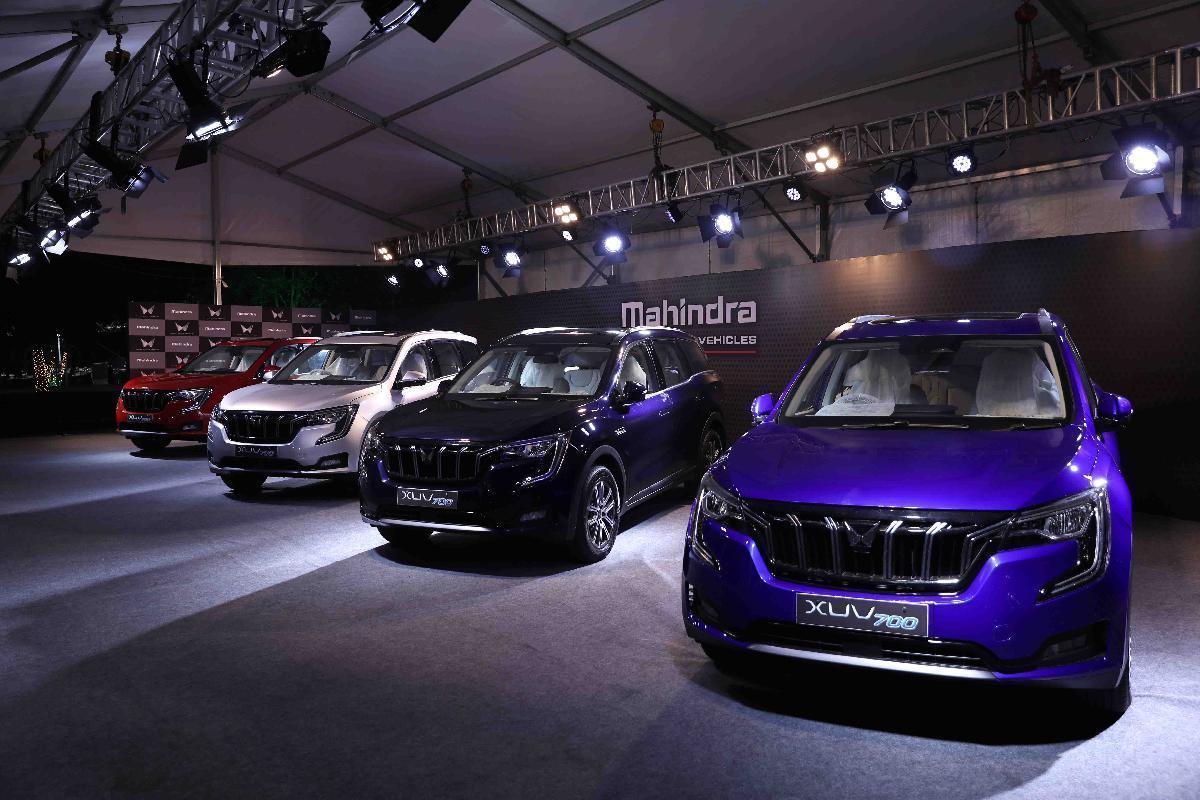
Another interesting insight that Mehta offers is that post-pandemic, people are looking for opportunities to take short breaks and drive out in order to beat stress and with the infrastructure now facilitating things, road travel is set to get even more popular and SUVs, as always, will continue to be the preferred choice on account of safety, better seating, as well as capability of handling those surprisingly bad stretches of roads along the ghats. But with the option of both manual and automatic on offer, what according to him will people be opting for on the XUV700? “India will eventually shift to automatics. Cities are getting congested and in cities and metros, automatics will become the default choice, just from the convenience point of view. Currently in the C+ SUVs, automatics are at about 25-28% and I think in about a couple of years it’ll inch to 40%,” says Mehta.
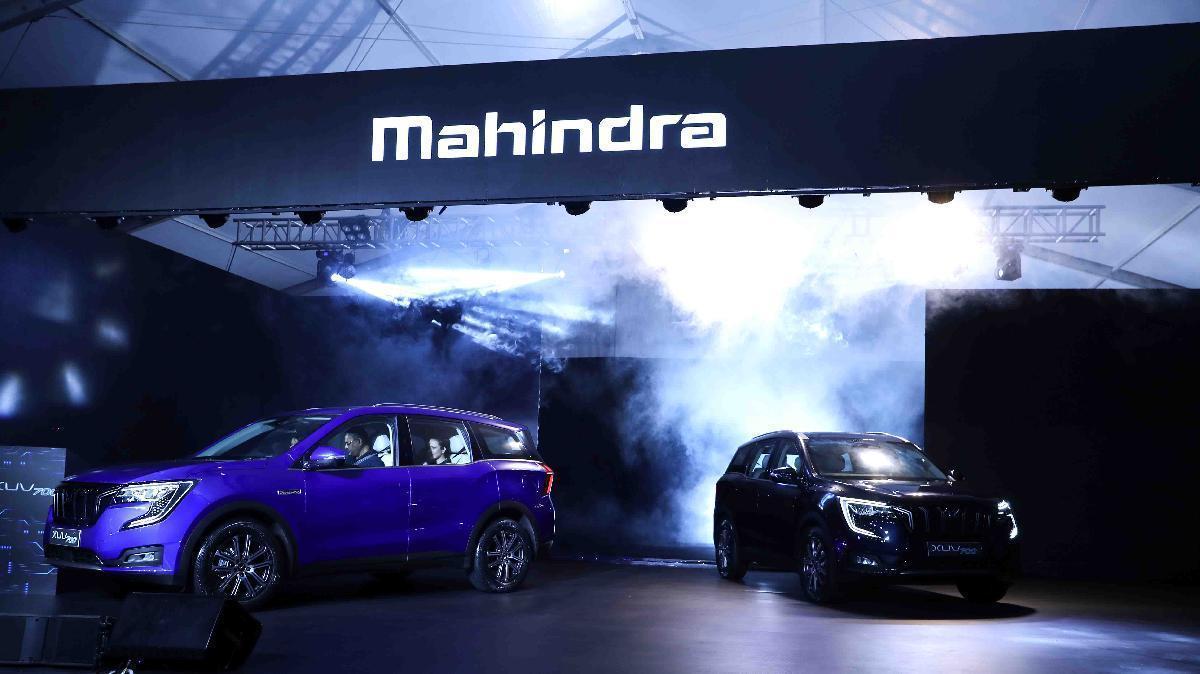
Talking about democratizing the whole SUV segment, Mehta talks about the huge opportunity that XUV700 has. “If I look at two distinct segments, there is the above 4m – 4.4m, that’s about 30,000 units per month currently, then there is a 4.5m – 4.8m and that is the typical seven-seater and that’s another 20,000 units. So, it is 50,000 units per month opportunity that we’re looking at, and I think, given the pricing that we have done which is a price typically seen in a sub-four-meter car, we should be looking at a very good slice of that opportunity,” says Mehta.
